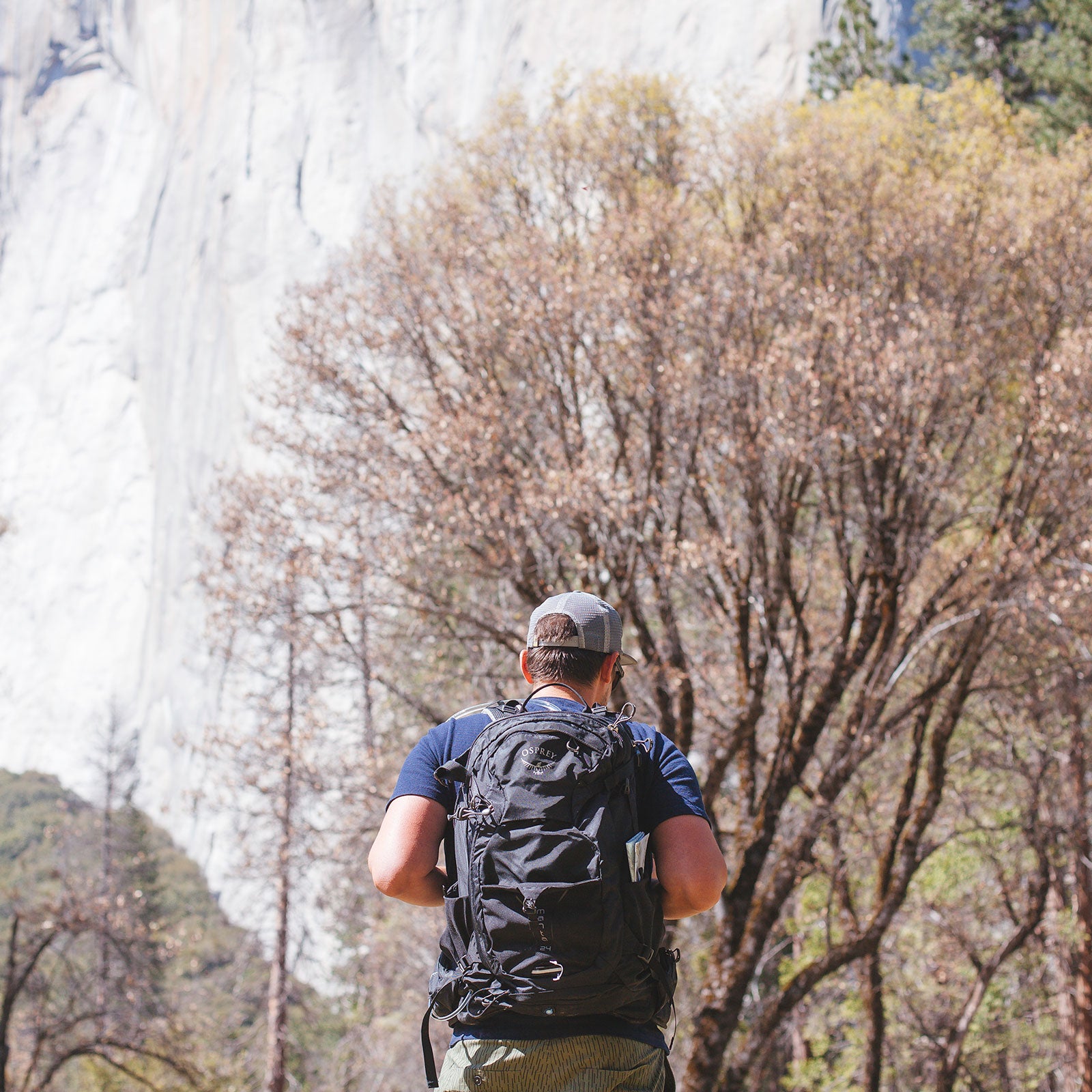I have found hiking with my daughter, Jojo, to be one of the great joys of parenthood. Though it means that whatever pack I bring has to carry well on my back and fit everything I need, while also functioning as a diaper bag. So I put this selection of haulers in the 18-to-24-liter range (the sweet spot for carrying enough but not too much) to the test to suss out the best daypacks for family hikes.
The Test
I tried out these packs for six weeks, using them to tote gear on hikes with my wife and toddler in Yosemite National Park or the Siskiyous near my home in Ashland, Oregon. We got out for one to three hours at a time on moderately strenuous trails. Lugging enough for three people proved to be a good test of how much these packs could hold. And because I was constantly reaching for snacks, water, layers, and sunscreen (plus diapers for the little one), I took into account how easy it was to access the contents.
The Results
Winner: Osprey Manta 24 ($160)
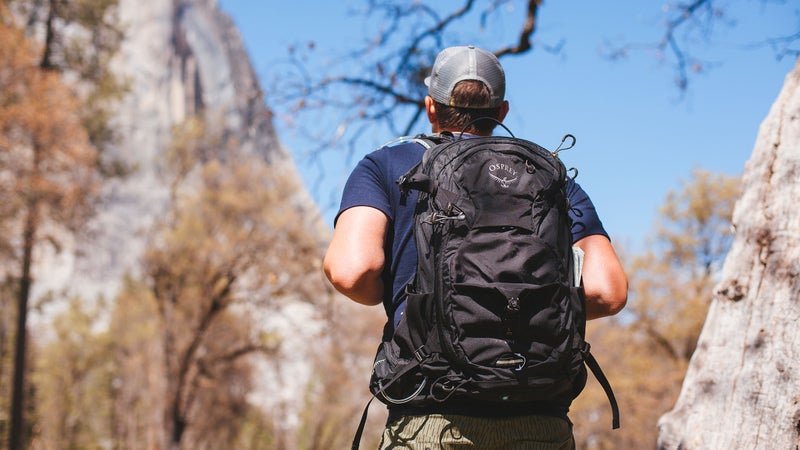
Weight: 2.9 pounds
Load Carrying: 4.5/5
Packing Prowess: 4/5
Comfort: 5/5
Ease of Use: 4.5/5
If you read this column regularly, you know that I take pride in being the family gear mule (also referred to as Dad). And this pack let me play the role well. The trampoline-style suspension easily carried a load of more than 20 pounds comfortably while keeping the body of the itself away from my back. My crusty inner outdoorsman first wrote off the suspension as overbuilt. But I cast aside all judgement when, after an hour and a half on the Valley Loop Trail in Yosemite on a 75-degree day, the back of my cotton shirt collected almost no sweat. My DSLR camera fit nicely in the stretchy exterior compartment. The integrated 2.5-liter hydration bladder never spilled a drop of water—even when I accidentally stored it on its side during a six-hour drive from Yosemite to Redding, California. And a magnetic attachment on the sternum strap kept the tube nice and tidy, but it was still long enough for others to take a sip as we walked. The hipbelt had a wide range of adjustability and was the second sturdiest of the test. It effortlessly kept the load distributed over a full day in the Valley. So many pockets and features do come with a weight penalty, though. And despite nothing failing on me in the six weeks of testing, there are many moving parts—zipper pulls, a hydration mouthpiece, buckles—to potentially break in the field.
2. Mystery Ranch Coulee 25 ($169)
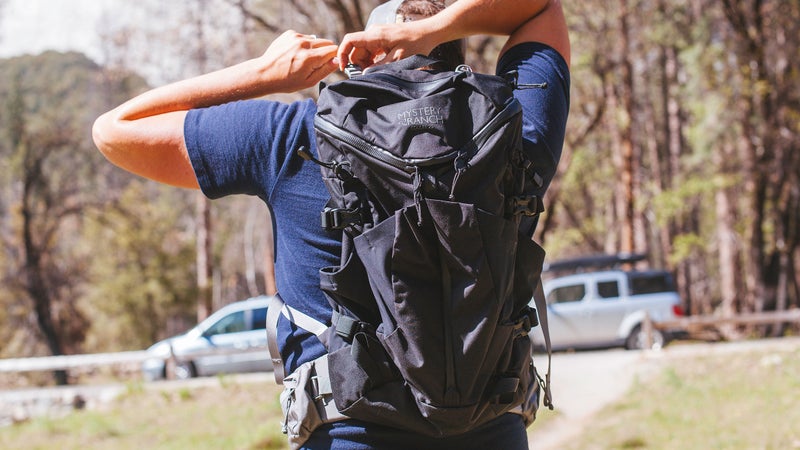
Weight: 2.9 pounds
Load Carrying: 5/5
Packing Prowess: 5/5
Comfort: 3/5
Ease of Use: 4/5
The took second because of its combination of brilliant design and burliness. Every single detail—from the urethane-coated zippers to the 330-denier nylon—inspired confidence in its durability. I was able to microadjust the fit by lengthening the yoke with a series of easy-to-use straps, making the rigid internal frame remarkably comfortable and the Coulee the best at carrying the heaviest loads. The shoulder straps and hipbelt were the widest and sturdiest of this bunch, which helped spread the pressure so it wasn’t uncomfortably concentrated. Mystery Ranch’s stand-out three-way zipper system—two diagonal zips at the top and one running vertically down the middle to form a big Y—allowed me to splay the bag open and access the whole interior. This system shaved a solid two minutes off as I changed Jojo’s diaper during a hike outside Lithia Park in Ashland. Instead of having to rummage around blindly for a fresh one I’d carelessly shoved into the bottom of the pack, I found it immediately by undoing the big center zip. The Coulee was a strong contender for first but got dinged because it didn’t have a breathable back panel; even though it sat slightly off the middle of my back, I sweat through the top and bottom of my shirt in under an hour.
3. The North Face Chimera 24 ($110)
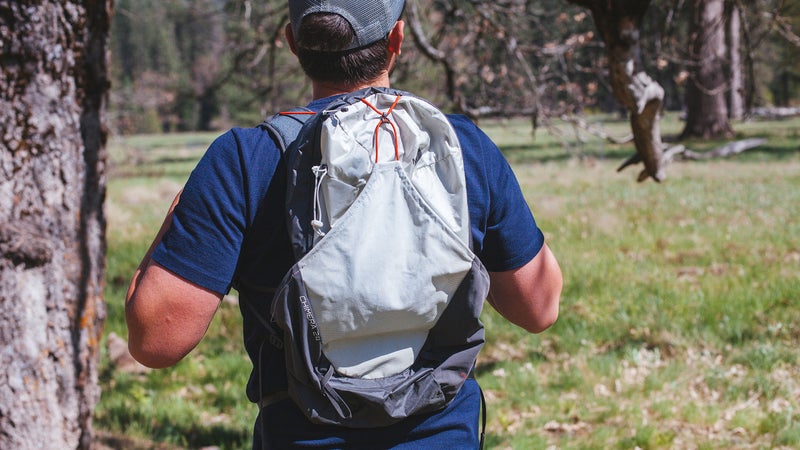
Weight: 1.2 pounds
Load Carrying: 3/5
Packing Prowess: 4/5
Comfort: 4/5
Ease of Use: 4/5
Whenever I see that a pack is minimalist, I assume it will be damn near featureless and therefore pretty uncomfortable. The proved the exact opposite. It was loaded with smart design details that didn’t add much weight and made this otherwise pared-down pack remarkably usable while still on my back. A zipper on the right side afforded access to the main compartment, while a half-length zipper on the left opened to a smaller external pocket. (Be warned, though: if you want to grab something quickly with the Chimera on, plan ahead and pack carefully. I spent minutes fishing for a snack for my hungry daughter as we hiked to Mirror Lake in Yosemite.) The Chimera also has an exterior stash pocket that was big enough to fit an extra layer for me and a change of clothes for Jojo without any problems. And the pack was easy to open and close on the go, thanks to the North Face’s Dyno Cinch System—basically a stretchy skeleton that can be tightened or loosened using three strategically placed cords. It scored worse than the Manta and Coulee because, even though the back and shoulders offered a remarkable amount of comfort with their ample, breathable padding, its hipbelt was a thin piece of webbing that was uncomfortable and didn’t offer much help in carrying loads heavier than 20 pounds.
4. Gregory Miwok 18 ($100)
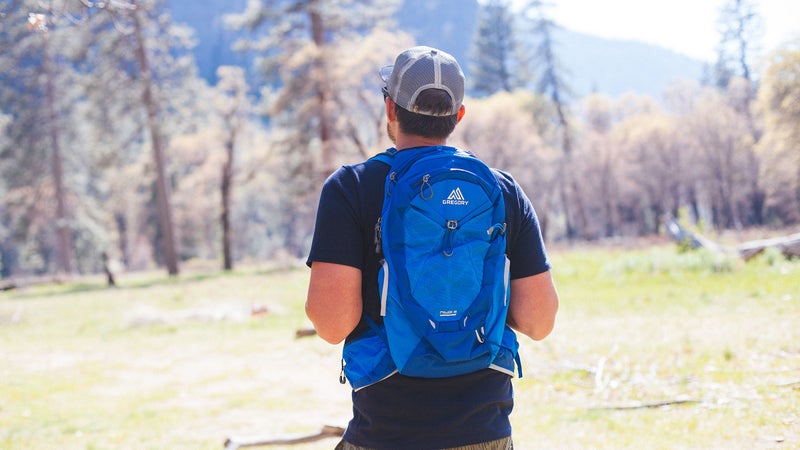
Weight: 1.8 pounds
Load Carrying: 3.5/5
Packing Prowess: 4/5
Comfort: 3.5/5
Ease of Use: 3/5
The felt considerably larger than its 18 liters would suggest, thanks to pockets on the hipbelt, a stretchy exterior stash pocket, and three internal compartments. I was planning on testing the 24-liter version of this pack, too, but ended up feeling like the 18 had plenty of space after it fit enough gear for a two-hour morning hike in the Ashland watershed. Even though it had the benefits of a pared-down lightweight pack (i.e., simplicity), it offered just the right amount of padding in the back panel and shoulder straps to keep it comfortable under a 20-pound load. The BioSync suspension—stretchy mesh panels connecting the shoulders to the hipbelt—proved to be more than just cute portmanteau. While fully loaded, the Miwok moved well as my torso flexed left and right. Why, with all this glowing praise, did it fall to fourth on the list? It didn’t quite have the user-friendly design of the Chimera, nor did it carry a load as well as the Manta or Coulee.


